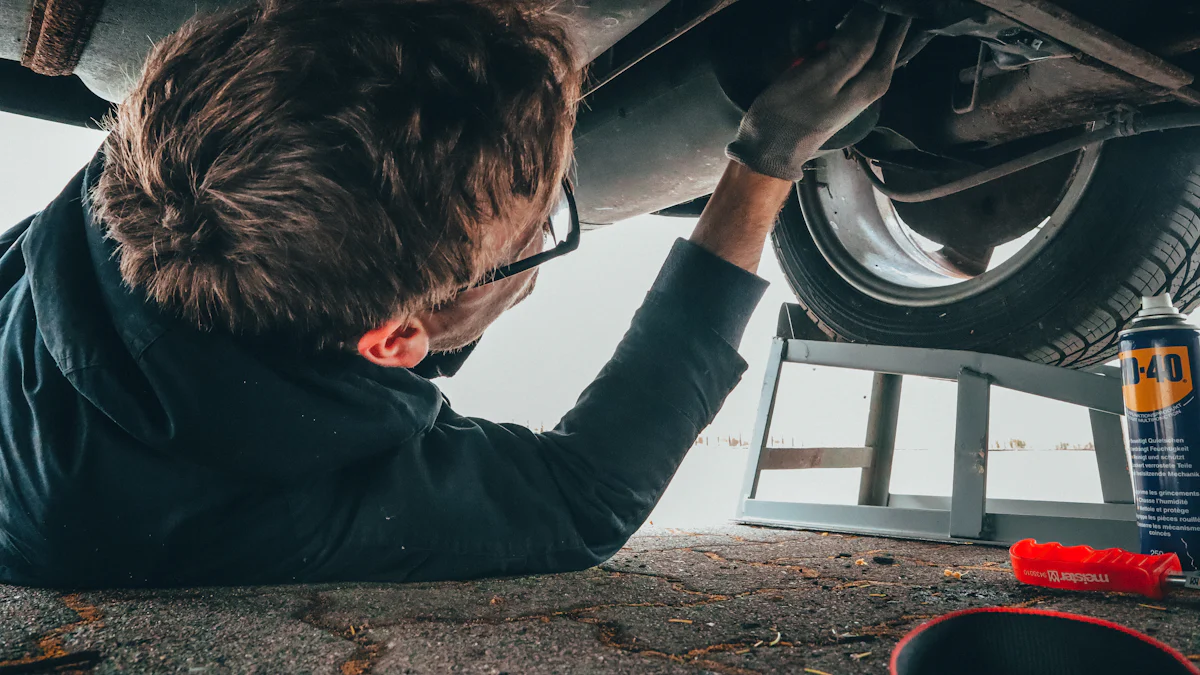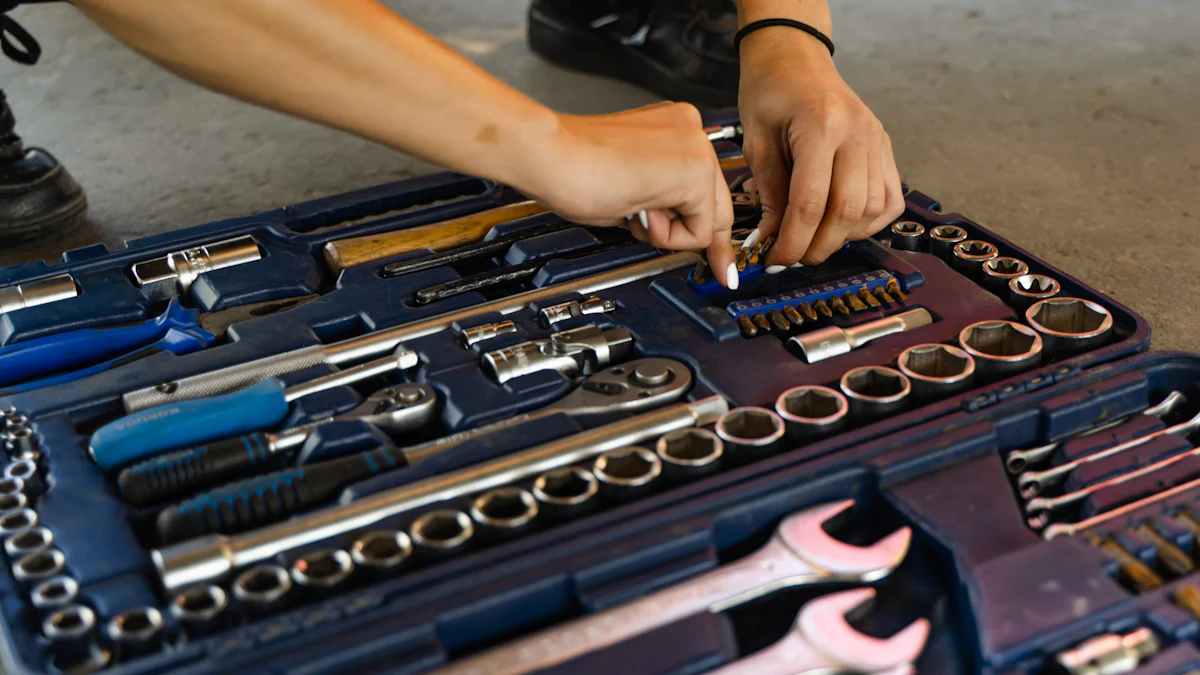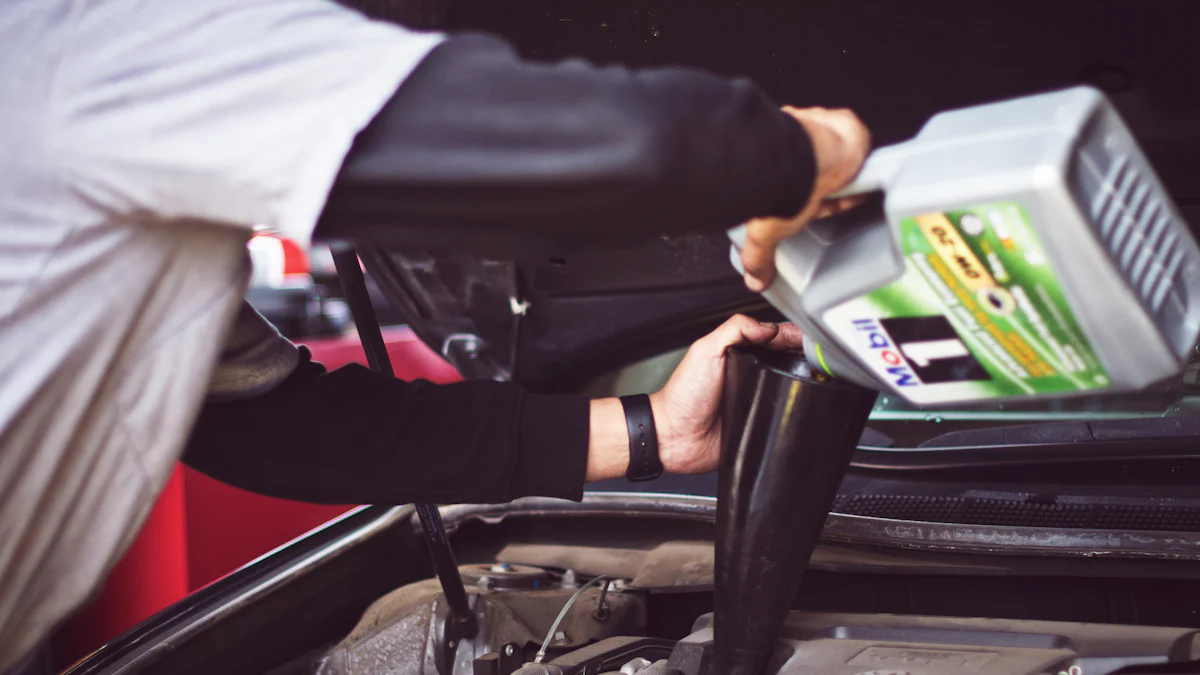
When delving into the realm of automotive maintenance, understanding the significance of an Automotive harmonic balancer is paramount. This crucial component plays a pivotal role in reducing engine vibrations and ensuring smooth operation. Recognizing the symptoms of a faulty harmonic balancer, such as engine vibrations and unusual noises, is key to preempting potential issues. Moreover, gaining insight into how to replace a harmonic balancer equips car owners with the knowledge needed to address any underlying concerns promptly.
Tools and Preparation

Essential Tools
When preparing to replace the Harmonic Balancer, it is essential to gather the necessary tools for a smooth process. The Harmonic Balancer Puller is a crucial tool that aids in safely removing the balancer without causing damage. Alongside this, having Long Bolts on hand proves to be invaluable for securing the balancer during installation. Additionally, utilizing the Starter Ring Tool can facilitate the removal and installation process, ensuring precision and efficiency.
Safety Precautions
Prioritizing safety measures is paramount when embarking on any automotive maintenance task. Immobilizing the Crankshaft is a critical step to prevent any unexpected movements that could lead to accidents or damage. Furthermore, handling the Metal Pin with care is necessary to guarantee its proper alignment within the new harmonic balancer, ensuring a secure fit and optimal functionality.
Preparing the Vehicle
Before diving into the replacement process, certain preparatory steps must be taken to set the stage for a successful outcome. Disconnecting the Battery serves as a preventive measure against electrical mishaps and ensures a safe working environment. Moreover, lifting the vehicle using appropriate equipment allows for better access to the harmonic balancer area, enabling a more efficient replacement process.
Step-by-Step Guide

Removing the Old Harmonic Balancer
To initiate the replacement process, accessing the Harmonic Balancer is the primary step. This component, responsible for absorbing torsional vibrations in the crankshaft, consists of two laminated pieces joined together with rubber. Its crucial role in canceling out the crankshaft’s harmonics emphasizes the necessity of prompt maintenance. Ignoring any signs of wear and tear could lead to severe consequences, potentially jeopardizing engine functionality.
When dealing with traverse mounted engines, replacing the harmonic balancer may pose challenges due to space limitations. However, with the right tools and a methodical approach, this task can be accomplished efficiently. Utilizing the Harmonic Balancer Puller is essential for safely removing the balancer without causing damage to surrounding components. This tool ensures a smooth extraction process, preserving both the balancer and the engine integrity.
Installing the New Harmonic Balancer
Once the old harmonic balancer has been successfully removed, attention shifts towards installing its replacement. Aligning the Metal Pin within the new balancer is a critical step to ensure proper functionality. This small yet significant component plays a key role in securing the balancer in place and maintaining its stability during engine operation.
Securing the harmonic balancer involves meticulous precision to guarantee a snug fit that withstands engine vibrations effectively. Proper alignment of all components is paramount to prevent any future issues that may arise from improper installation. By following each step diligently and double-checking alignment, car owners can rest assured that their vehicle’s engine will operate smoothly post-replacement.
Final Checks
As the installation process nears completion, reconnecting the Battery serves as one of the final steps before testing the engine’s functionality. This crucial task ensures that all electrical systems are operational and ready for use post-maintenance. Reconnecting with care and attention to detail minimizes any potential risks associated with electrical malfunctions or disruptions.
Testing the Engine after replacing the harmonic balancer is vital to verify that all components are functioning correctly. Starting up the engine allows car owners to assess its performance and detect any irregularities that may require further inspection or adjustments. A thorough test run provides peace of mind knowing that the replacement process was executed successfully and that no underlying issues remain unresolved.
Harmonic Balancer Puller Alternatives
When considering Harmonic Balancer Puller Alternatives, car owners have a few options to explore that can aid in the replacement process. Understanding these alternatives provides flexibility and efficiency when dealing with this essential engine component.
Using Long Bolts
Long Bolts serve as a viable alternative to the dedicated harmonic balancer puller, offering a practical solution for securing and extracting the balancer. By utilizing long bolts of appropriate size and strength, car owners can effectively remove the old harmonic balancer without specialized tools. This method proves particularly useful in situations where access to a puller is limited or unavailable.
- Long bolts provide a cost-effective and accessible option for those looking to replace their harmonic balancer efficiently.
- Securing the long bolts in designated locations on the balancer allows for controlled extraction, minimizing the risk of damage to surrounding components.
Using a Starter Ring Tool
Another alternative worth considering is the Starter Ring Tool, which can facilitate the removal and installation of the harmonic balancer with precision. This tool offers a unique approach to handling the balancer, providing stability and control throughout the process. By leveraging the starter ring tool’s design, car owners can ensure a smooth transition between old and new balancers without compromising on safety or accuracy.
- The starter ring tool streamlines the replacement process by offering a specialized mechanism for handling harmonic balancers.
- Its ergonomic design enables users to maneuver the balancer effectively, reducing the likelihood of errors during installation.
Other Tools
In addition to long bolts and starter ring tools, there are various other tools that can aid in replacing a harmonic balancer seamlessly. Brands like Dayco or ATP Balancer are recommended for their quality and reliability in ensuring optimal engine performance post-replacement. While some may consider repairing old balancers using a wire welder, it is advised against investing in such repairs due to potential risks of further damage.
- Choosing reputable brands like Dayco or ATP Balancer guarantees durability and longevity for your vehicle’s harmonic balancer.
- Avoiding unnecessary repairs on old balancers mitigates the risk of complications down the line, safeguarding engine functionality.
By exploring these alternatives and selecting tools that align with your needs, replacing a harmonic balancer becomes an accessible task that enhances your vehicle’s overall performance.
Discover the Quick Fix
When facing Harmonic Balancer issues, seeking professional guidance can offer a quick resolution to ensure optimal engine performance. Consulting a skilled mechanic provides expert insight into the specific challenges associated with Harmonic Balancer replacements, guiding car owners through the process with precision and efficiency.
Consulting a Mechanic
Seeking assistance from a qualified mechanic is advisable when encountering Harmonic Balancer complications beyond one’s expertise. Mechanics possess the knowledge and experience necessary to diagnose and address Harmonic Balancer issues effectively. By entrusting your vehicle to a professional, you can rest assured that the replacement process will be handled with care and expertise, minimizing the risk of errors or complications.
Mechanics specializing in Harmonic Balancer replacements utilize advanced tools and techniques to ensure a seamless transition from the old balancer to the new one. Their expertise in handling intricate engine components guarantees a thorough inspection of the Harmonic Balancer, identifying any underlying issues that may impact its functionality. By collaborating with a mechanic, car owners can benefit from personalized recommendations tailored to their vehicle’s specific needs.
Average Cost and Time
Understanding the average cost and time associated with replacing a faulty Harmonic Balancer is essential for informed decision-making. The cost of this maintenance task typically ranges from $200 to $500, depending on various factors such as the vehicle make and model, as well as the specific part required for replacement. By consulting with a mechanic beforehand, car owners can receive an upfront quote detailing the expected expenses involved in replacing the Harmonic Balancer, allowing for budget planning accordingly.
In terms of time investment, replacing a Harmonic Balancer usually takes several hours to complete. The intricate nature of this task requires meticulous attention to detail and adherence to proper procedures to ensure successful installation. Mechanics proficient in Harmonic Balancer replacements prioritize efficiency without compromising on quality, striving to deliver prompt service that restores your vehicle’s optimal performance swiftly.
By considering both the average cost and time requirements for replacing a faulty Harmonic Balancer, car owners can make informed decisions regarding their vehicle’s maintenance needs. Consulting a mechanic not only streamlines the replacement process but also provides valuable insights into prolonging your engine’s longevity through timely repairs and expert care.
In summary, the process of replacing the harmonic balancer involves essential steps to ensure optimal engine performance. Timely replacement is crucial to prevent further damage and maintain the vehicle’s functionality. Car owners are encouraged to seek professional assistance if needed, especially when encountering complex issues beyond their expertise. By following a systematic approach and prioritizing maintenance, drivers can safeguard their engine’s longevity and overall efficiency.
Post time: May-30-2024



